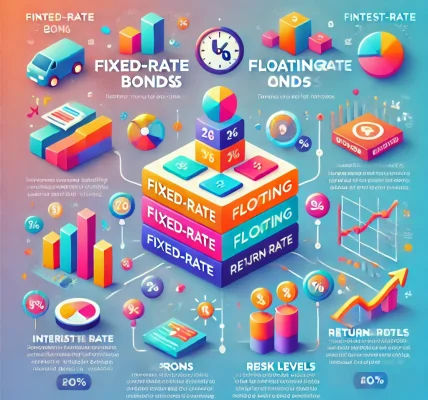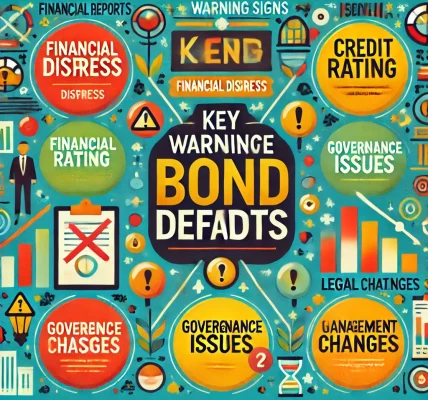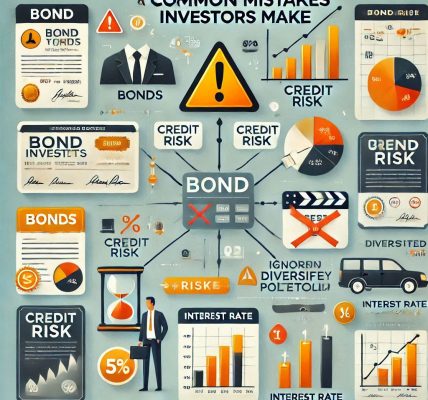Investing in bonds is a smart way to diversify your portfolio and ensure steady returns. However, with a variety of bond types available, selecting the right one can be challenging. In this guide, we’ll explore the key factors to consider when choosing the right bond for your investment portfolio, ensuring it aligns with your financial goals.
Understanding Bonds
Bonds are debt instruments where investors lend money to an issuer (government, corporation, or municipality) in exchange for periodic interest payments and the return of the principal at maturity. Each bond comes with unique characteristics that cater to different investment needs.
Factors to Consider When Choosing a Bond
1. Investment Goals
Determine the purpose of your investment:
- Income Generation: Choose bonds with high yields or regular coupon payments.
- Capital Preservation: Opt for government bonds with low risk.
- Growth: Consider longer-term bonds that might benefit from favorable interest rates.
2. Risk Tolerance
Evaluate your comfort with risk:
- Low Risk: Government bonds (e.g., U.S. Treasury bonds) are ideal.
- Moderate Risk: High-quality corporate bonds offer slightly higher returns.
- High Risk: High-yield or junk bonds provide higher returns but carry a significant risk of default.
3. Bond Duration and Maturity
The bond’s maturity period impacts your investment:
- Short-Term Bonds (<3 years): Suitable for conservative investors or those needing liquidity.
- Medium-Term Bonds (3-10 years): Balance between risk and returns.
- Long-Term Bonds (>10 years): Higher yields but more sensitive to interest rate changes.
4. Interest Rate Environment
Bonds are sensitive to interest rate movements:
- Rising rates decrease bond prices, making shorter-duration bonds more favorable.
- Falling rates increase bond prices, benefiting long-duration bonds.
5. Credit Quality
Check the credit rating of the bond issuer:
- High Credit Rating (AAA or AA): Lower risk but lower returns.
- Medium Credit Rating (A or BBB): Moderate risk with better yields.
- Low Credit Rating (BB or below): High risk but potential for high returns.
6. Tax Implications
Understand the tax benefits:
- Municipal Bonds: Interest is often tax-exempt, making them attractive for high-income investors.
- Taxable Bonds: May offer higher yields to compensate for tax obligations.
7. Liquidity Needs
Consider how quickly you might need to access your money. Some bonds, like U.S. Treasury bonds, are highly liquid, while others, such as municipal bonds, may have limited trading activity.
Types of Bonds to Consider
1. Government Bonds
- Pros: Low risk, reliable returns.
- Best For: Risk-averse investors or those looking for safe investments.
2. Corporate Bonds
- Pros: Higher yields than government bonds.
- Best For: Investors comfortable with moderate risk.
3. Municipal Bonds
- Pros: Tax advantages, support community projects.
- Best For: High-income investors seeking tax-free returns.
4. High-Yield Bonds
- Pros: High potential returns.
- Best For: Investors with a high-risk tolerance.
5. Bond Funds and ETFs
- Pros: Diversification, professional management.
- Best For: Beginners or those seeking convenience.
Steps to Build a Bond Portfolio
- Assess Your Financial Goals: Define what you want to achieve with your investments.
- Diversify: Mix different types of bonds to balance risk and returns.
- Monitor Market Conditions: Stay updated on interest rates and credit ratings.
- Review Periodically: Adjust your bond holdings based on changing financial needs or market trends.
Common Mistakes to Avoid
- Ignoring Credit Ratings: Always check the issuer’s creditworthiness.
- Focusing Only on Yield: High yields often come with high risks.
- Neglecting Tax Implications: Consider how taxes will affect your returns.
- Overlooking Duration: Long-term bonds may expose you to higher interest rate risks.
Conclusion
Choosing the right bond for your portfolio requires careful consideration of your financial goals, risk tolerance, and market conditions. By understanding the different types of bonds and their characteristics, you can build a diversified and robust investment strategy that suits your needs.




